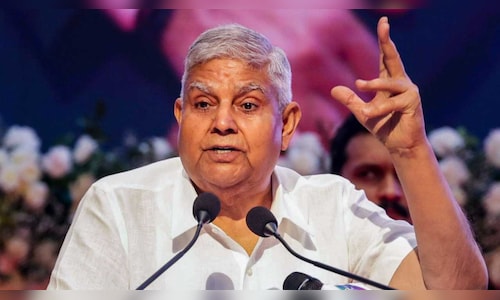The Home Ministry conveyed the resignation of Dhankhar under Article 67A of the Constitution with immediate effect to the Parliament.
Prime Minister Narendra Modi wished good health to Dhankhar, a day after his resignation. “Jagdeep Dhankhar Ji has got many opportunities to serve our country in various capacities, including as the Vice President of India. Wishing him good health,” he said.
Dhankhar, 74, assumed office in August 2022, and his tenure was till August 2027. “To prioritise health care and abide by medical advice, I hereby resign as Vice President of India, effective immediately, in accordance with Article 67(a) of the Constitution,” he said in the letter to the President.
Also read | Dhankhar resignation: More than what meets the eye | The inside story
Following the sudden resignation, the second-highest constitutional position in the country has to be filled by September 19, within 60 days as per the Constitution.
The vice president is the ex-officio chairperson (holding the office of the Rajya Sabha chairperson by virtue of being the vice president) of the Rajya Sabha and does not hold any other office of profit. In the meantime, Rajya Sabha deputy chairman Harivansh Narayan Singh took over the House proceedings till the time a new vice president is elected.
Vice President election
The election of the vice president is governed by Articles 63 to 71 of the Constitution and the Vice-President (Election) Rules, 1974. The Constitution mandates that the vacancy must be filled “as soon as possible.”
Clause 2 of Article 68 of the Constitution says an election to fill a vacancy in the office of the vice president occurring due to his death, resignation or removal, or otherwise, will be held “as soon as possible” after it becomes vacant. The person elected to fill the vacancy will be entitled to hold office “for the full term of five years from the date on which he enters upon his office”.
Under Article 66, the vice president is elected by an ‘electoral college’ consisting solely of members of both Houses of Parliament — Lok Sabha and Rajya Sabha — via a ‘secret ballot’ and a proportional representation system using the single transferable vote.
Key eligibility criteria for a candidate
- Must be a citizen of India.
- At least 35 years old.
- Eligible for election to the Rajya Sabha.
- Not hold any office of profit.
Probable candidate names doing the rounds
Here are some names doing the rounds as potential successors:
-
- Nitish Kumar, Bihar Chief Minister
- Rajnath Singh, Union Defence Minister
- JP Nadda, Union Health Minister and BJP national president
- Manoj Sinha, J&K Lt General
- Shashi Tharoor, Congress MP
- Harivansh Narayan Singh, Rajya Sabha deputy chairman
Role of a Vice President
The vice president serves as the ex-officio chairman of the Rajya Sabha, responsible for maintaining order and procedure in the Rajya Sabha. However, he/she is not a member of either House of Parliament or any state legislature.
He also steps in as ‘acting President’ in case the sitting President is unable to fulfil duties due to resignation, death, or removal, until a new President is elected.
The Constitution does not say anything about who performs the duties of the vice president in case of his death or resignation before the expiry of his term, or when the vice president acts as the president of India.

